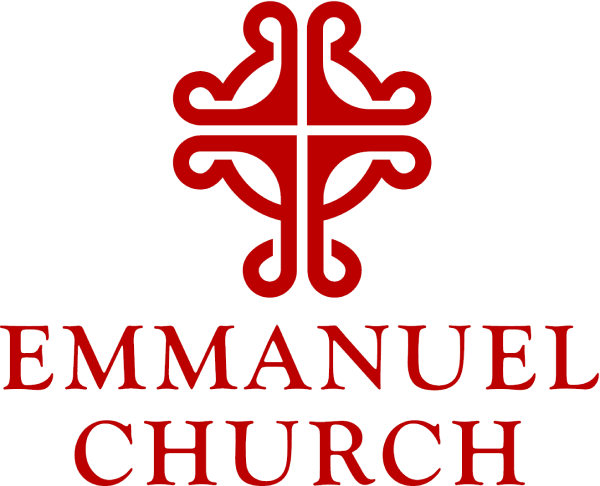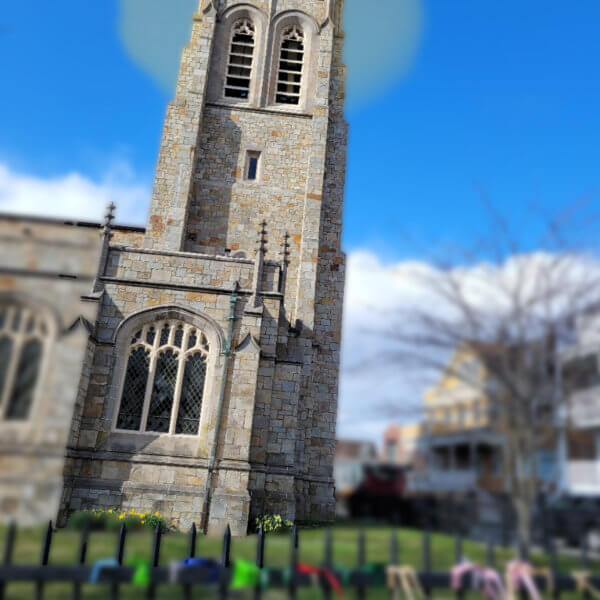
Martha’s Halo
We’ve been talking about haloes during Lent. Haloes — those radiant crowns of our very best hopes for each other and our community — are not traditional Lenten subjects. It’s the Lenten discipline of self-examination and holy hope that brings haloes into our conversation this year. Each Sunday we’ve written our dreams for our community’s future on ribbons of all different kinds and colors, and tied them to the fence along Spring and Dearborn Streets. They’re out there now, fluttering in the breeze. After Palm Sunday, we’ll gather up the ribbons, wash and iron them, and weave them into an altar cloth to use in our worship, representing the way in which we — and our very best intentions for each other — are woven into the fabric of our community, where we all belong.
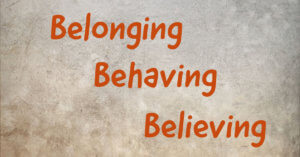 What does it mean to belong? As we emerge from the pandemic and start figuring out how we’ll coexist with the virus for the long term, we’re hungry for community. Belonging is connection with others, being part of a community where we know others, and where we ourselves are known. Many communities — faith and secular — have historically followed the pattern of the “Three Bs” — Believe, Behave, and Belong.
What does it mean to belong? As we emerge from the pandemic and start figuring out how we’ll coexist with the virus for the long term, we’re hungry for community. Belonging is connection with others, being part of a community where we know others, and where we ourselves are known. Many communities — faith and secular — have historically followed the pattern of the “Three Bs” — Believe, Behave, and Belong.
Roman Catholic priest Billy Swan writes about this pattern in the Christian context, and we can see the Three Bs in other contexts too: There’s a certain order to it, Fr. Swan writes. First came believing—in God, in Jesus, and in the Holy Spirit. Then behaving—believing required that you had to behave in a certain way (for example, attend worship services but don’t drink, dance, or play cards). AFTER Believing and Behaving, you Belong. Fr. Swan came to believe — and I wonder now too! — whether this traditional formulation of the Three Bs is exactly backward. In other words, are we really moved first by belonging, and through our belonging and connection with the community, we engage and participate, changing our behavior? And then does our behavior in that community — connecting, serving, helping, volunteering, and participating — help us to recognize our belief? It’s an old tenet of faith that we become what we pray.
Praying with Hands
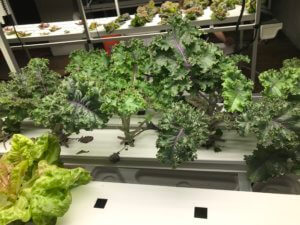 And praying with words — in a church service, for example — is only one way to pray. We also pray with our hands — harvesting kale from the hydroponic garden, converting the church bookkeeping system, preparing the budget, checking the church’s wiring, caring for our grounds, dismantling and finding new uses for our old organ, singing in the choir, ushering, reading, acolyting, and organizing Coffee Hour. We are welcomed into belonging, and then we pray with our hands and our hearts — baking, raking, hauling, singing, and calculating — loaf by loaf, leaf by leaf, and note by note — until we become our very prayers: we become a beloved community with a halo the size of Newport. Everyone is welcome in the marvelous activity of God. Emmanuel’s halo shines out Emmanuel’s deep engagement in the community, welcoming all to join in.
And praying with words — in a church service, for example — is only one way to pray. We also pray with our hands — harvesting kale from the hydroponic garden, converting the church bookkeeping system, preparing the budget, checking the church’s wiring, caring for our grounds, dismantling and finding new uses for our old organ, singing in the choir, ushering, reading, acolyting, and organizing Coffee Hour. We are welcomed into belonging, and then we pray with our hands and our hearts — baking, raking, hauling, singing, and calculating — loaf by loaf, leaf by leaf, and note by note — until we become our very prayers: we become a beloved community with a halo the size of Newport. Everyone is welcome in the marvelous activity of God. Emmanuel’s halo shines out Emmanuel’s deep engagement in the community, welcoming all to join in.
John’s gospel this morning is all about haloes that are easy to see, like Emmanuel’s, and haloes that we might otherwise miss. Martha’s halo is obvious. We can see her best intentions for her family and community shining out in her cooking, cleaning, and serving. Everything Martha does supports the community of Jesus’ followers, and her clear enthusiasm invites others in. But Mary’s halo is harder for us to see. Even Martha can’t see it until Jesus points it out to her, telling Martha to cut Mary some slack and not make her help out in the kitchen just then.
Mary and Martha
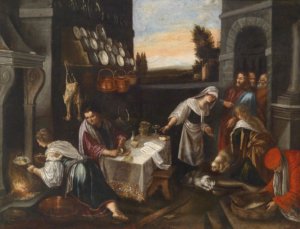 Imagine you’re at this dinner in Bethany. Lazarus is there, recently raised from the dead by Jesus, John’s gospel tells us. Mary, Martha, and Judas are the only others named in attendance, although John’s gospel mentions others. Martha is bustling away, cooking and serving. Most of us have seen foundations — or at least photos — of first century homes. A space as large as 10’x10’ would have been huge by first century standards. With only the five named people there — Jesus, Mary, Martha, Lazarus and Judas — the space would have been crowded before counting the 11 other disciples who were probably also present.
Imagine you’re at this dinner in Bethany. Lazarus is there, recently raised from the dead by Jesus, John’s gospel tells us. Mary, Martha, and Judas are the only others named in attendance, although John’s gospel mentions others. Martha is bustling away, cooking and serving. Most of us have seen foundations — or at least photos — of first century homes. A space as large as 10’x10’ would have been huge by first century standards. With only the five named people there — Jesus, Mary, Martha, Lazarus and Judas — the space would have been crowded before counting the 11 other disciples who were probably also present.
That’s a big crowd to cook for, even more so when cooking over fire outdoors, and after gathering fuel for the fire and hauling all of the water needed for cooking and cleaning from the village well. Martha’s halo is marvelous — positively glowing from her hard work and good intentions for her community. And then something out of the ordinary happens. Martha’s and Lazarus’s sister Mary takes a huge amount of precious nard, pours it out over Jesus’ feet, and wipes them with her hair. There’s nothing ordinary about Mary’s act, and we can’t let 2,000 years, 7,000 miles, and another language and culture get in the way of our seeing that. Imagine how the strong, spicy scent of the nard would have filled that small, crowded space, emanating from Mary’s hair and Jesus’ anointed feet — there’s no way to miss that!
Just to be sure we do notice, John’s gospel whispers the subplot in our ears as the narrative unfolds: Judas is a thief!, John’s gospel says in a parenthetical aside. He’s only mentioning the poor because he steals from the poor box! John’s whispered asides about Judas further emphasize how easy it would be to misinterpret Mary’s expression of belief. Her act is not easy to understand, especially out of context, when we don’t have experience in first century Jewish burial rituals. But even in the context of the moment, Martha and Judas — and likely most if not all of the others present — were confused.
That’s why John’s gospel presents other obvious interpretations: Martha’s request for help in the kitchen, and Judas’s objection about wasting an asset that could be turned to cash and given to the poor. John’s Jesus intervenes to point out Mary’s halo, saying that her spiritual extravagance matches the value of the precious nard she uses to anoint Jesus’ feet. John’s Jesus is saying that Mary’s faithful, believing behavior is as valuable and essential as Martha’s more visible service of cooking and serving.
Invite 21st Century Newport
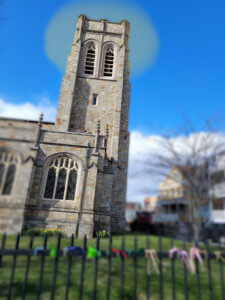 But here’s the deal: our confusion at Mary’s act of devotion points out the difficulty of the old believe/behave/belong paradigm. If we don’t understand the expression of belief, it is very difficult to progress to belonging. Jesus has to explain Mary’s act to all of us looking on, even Mary’s hardworking sister, Martha. And if Jesus has to explain it to Martha and Judas, what does that mean for us in 21st century Newport, Rhode Island as we invite the broader community in to join us?
But here’s the deal: our confusion at Mary’s act of devotion points out the difficulty of the old believe/behave/belong paradigm. If we don’t understand the expression of belief, it is very difficult to progress to belonging. Jesus has to explain Mary’s act to all of us looking on, even Mary’s hardworking sister, Martha. And if Jesus has to explain it to Martha and Judas, what does that mean for us in 21st century Newport, Rhode Island as we invite the broader community in to join us?
Some of what we do at Emmanuel is easy to interpret — even to those who don’t have experience with church, like harvesting kale, volunteering at MLK, and hosting Soup’s On. And some of what we do — for example, worship services — is more difficult to understand. As we invite belonging at Emmanuel, we need to let our haloes shine and remember that Mary’s act of devotion and Martha’s service are both essential, even if — as Ricky Ricardo used to say to Lucy — we have some ‘splainin’ sometimes even for those of us here in the pews. We share our home, building a vibrant, loving community. God has done marvelous things. Amen
